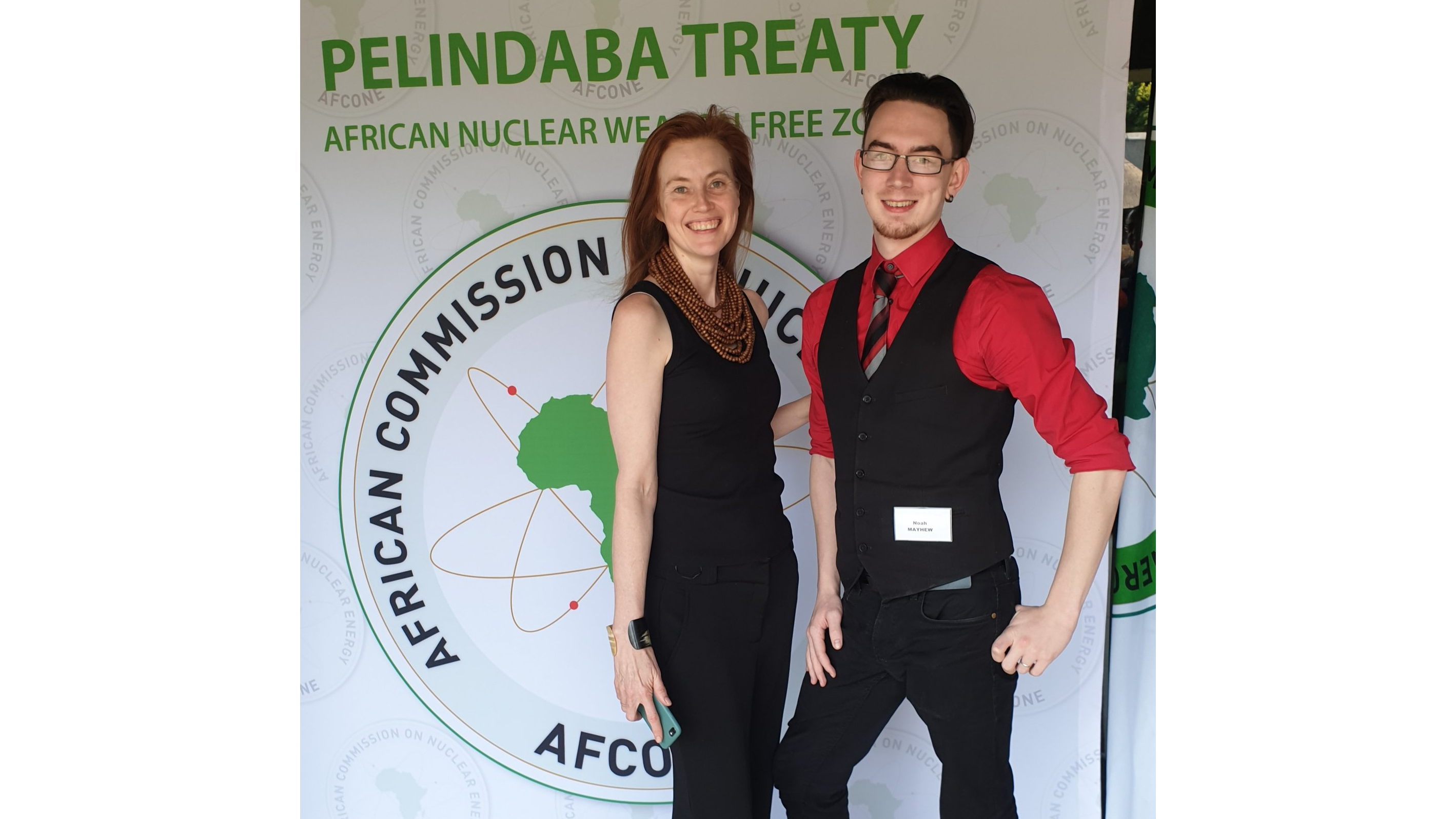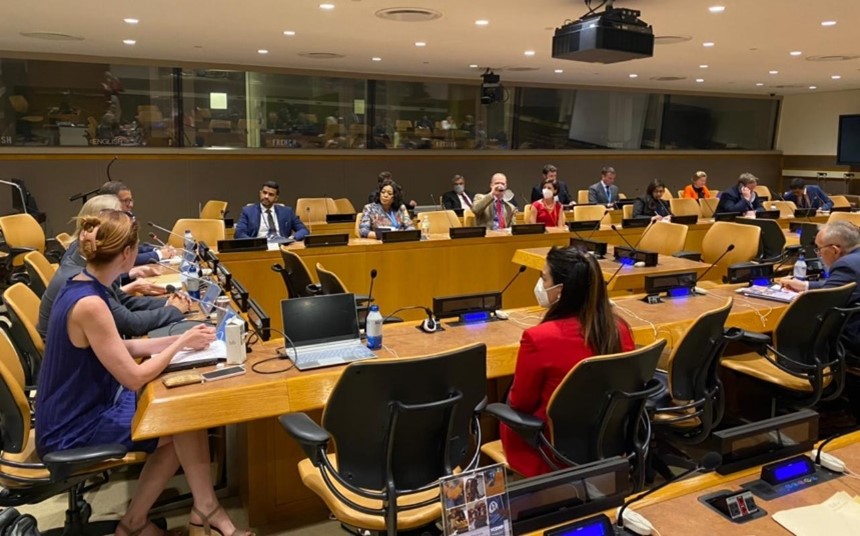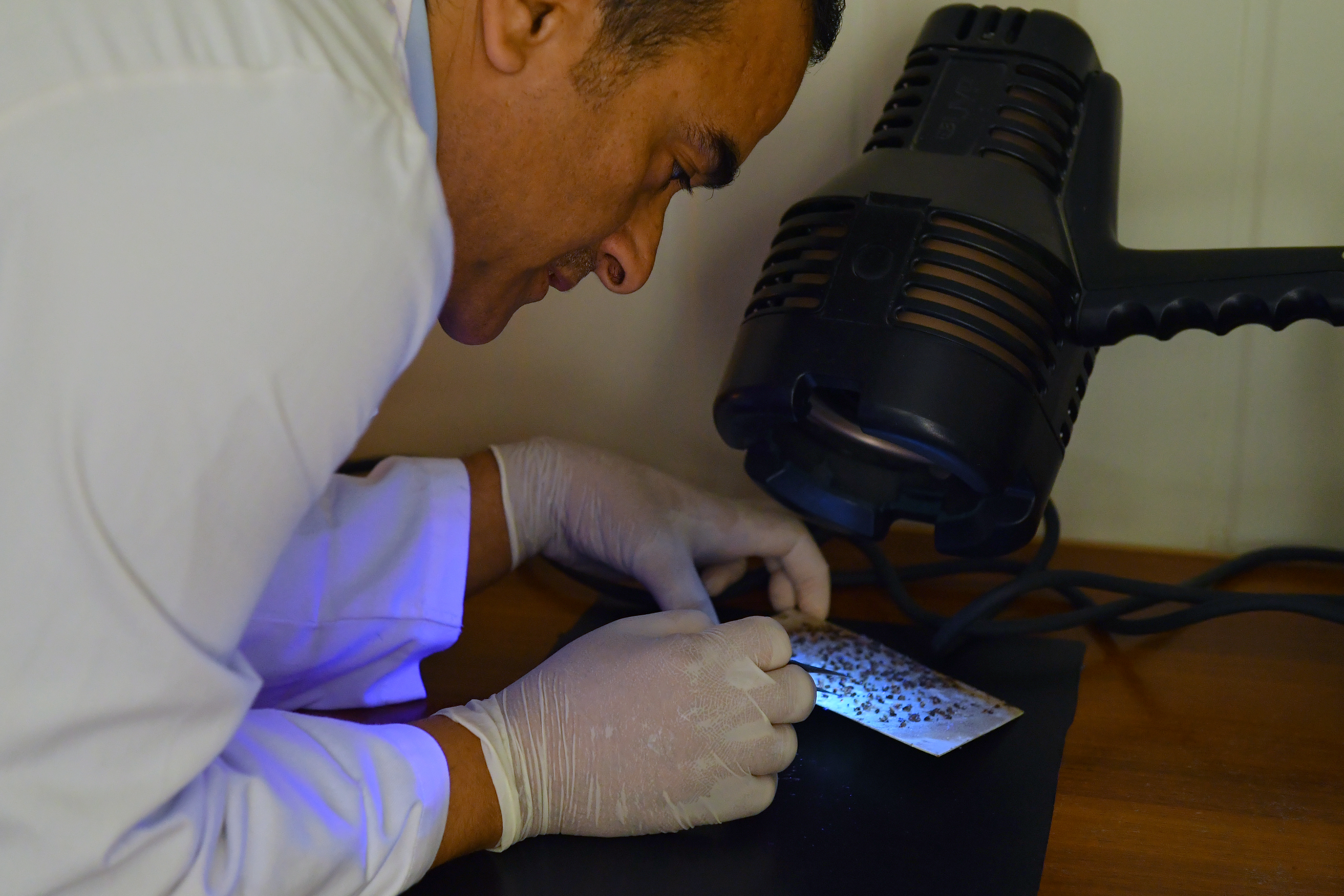
The Vienna Center for Disarmament and Non-Proliferation (VCDNP) organized a panel discussion entitled "Sustainable Use of Radioactive Sources for Agriculture, Food Security and Health" on 21 August 2018. Diplomats and technical experts from 32 Member States participated. The panel comprised experts from Brazil, Guatemala and Indonesia who discussed the benefits of radioactive sources, the sustainable management of these sources and the role of the International Atomic Energy Agency (IAEA). Laura Rockwood, the Executive Director of the VCDNP, moderated the panel.
Mr. Totti Tjiptosumirat is the Head of the Center of Isotopes and Radiation at the National Nuclear Energy Agency of Indonesia (BATAN) where radiation is used to breed new plant varieties that are disease and drought resistant. As a result of this mutation breeding, rice and soybean production has increased across Indonesia, BATAN has released six mutant rice varieties and five mutant soybean varieties since 2012 and there has been a 22.8% increase in farmers’ incomes as measured in 2016.
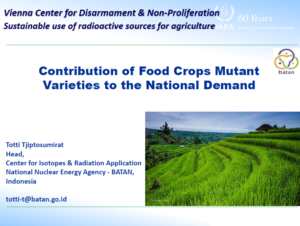
Gamma irradiation is the mainstay of mutation breeding in Indonesia; there are two gamma irradiation facilities at BATAN that are used for this purpose. Measures taken by BATAN to secure these radioactive sources include access control and camera surveillance. Mr. Tjiptosumirat provided a synopsis of the legal and regulatory framework of nuclear security in Indonesia regulating the security of radioactive sources.
The support provided by the Joint Food and Agriculture Organisation (FAO)/IAEA Division to BATAN includes: technology transfer and support to enhance R&D activities in collaboration with the Plant Breeder Lab; capacity building; policy advice and technical support in mutation breeding; and upgraded facilities for plant breeding and genetics. The IAEA also provides support to Indonesia in strengthening its legislative and regulatory framework and the physical protection systems at its facilities. The BATAN Center for Isotopes and Radiation Application has been designated as an IAEA Collaborating Centre.
Dr. Pedro Rendón is a specialist in large-scale mass rearing and Sterile Insect Technique (SIT) at the Guatemala-Mexico-US Moscamed Cooperative Programme in Guatemala, where he heads the Methods Development and Technology Transfer activities of the programme. The Moscamed Regional Programme was developed to: (1) contain the further northward spread of the Mediterranean fruit fly (medfly) that spread throughout the American continent from Brazil in 1901 to Guatemala and Mexico by the mid-1970s, with devastating effect on the agriculture industry in South and Central America; (2) eradicate the medfly from the areas it had invaded in southern Mexico; and (3) eradicate the medfly from Guatemala and eventually from the rest of Central America.
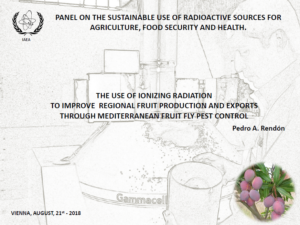
Since 1979 the programme has released sterile adult medflies as the central part of an integrated pest management approach that has resulted in the successful suppression – and in certain areas the complete eradication – of the medfly population in the region. Support from the IAEA includes the transfer of the Sterile Insect Technique (SIT) and other related technologies and, in collaboration with the FAO, capacity building and training related to the application of the technologies and fruit fly management.
The Guatemala insect mass rearing and sterilization facility, which is the largest in the world and currently produces 1.2 billion sterile medflies a week, uses three self-contained gamma irradiation units to sterilize the flies. These units weigh between four tons (the gammacell 220 unit) and eight tons (the 484-CP unit) and the sources cannot be removed without removing the unit. Further physical protection is provided through closed circuit televisions and intrusion detection systems, as well as through access control.
When asked about the cost benefit ratio of this programme, Dr. Rendón explained that, while the overall financial contributions to the programme have amounted to roughly US $1 billion since 1975 (a large proportion of which has been invested in the establishment and operation of mass rearing and sterilization facilities), the programme has released 0.19 trillion sterile males in the past three years, thus protecting the agriculture industries in Guatemala, Mexico, Belize and the USA and contributing to the development of multibillion dollar export industries in these countries.
Dr. Jair Virginio is the CEO of Biofábrica Moscamed Brasil, which has recently been designated as an IAEA Collaborating Centre. With the support of the Joint FAO/IAEA Division, Moscamed Brazil has become one of the pioneer institutions worldwide in the application of the sterile insect technique for the control of the Aedes mosquito that spreads diseases such as dengue fever and the Zika virus.
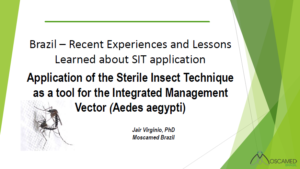
Moscamed Brazil aims to produce 4.5 million sterile male mosquitoes per week and will use a combination of X-ray irradiation and gamma irradiation to sterilize the mosquitoes. In his presentation Dr. Virginio quoted an excerpt from a 2010 article, “A new generation of X-ray irradiators for insect sterilization”, in which the use of X-ray irradiators as an alternative to gamma irradiators is examined. The excerpt states that fears of terrorism have resulted in delays and denials of transboundary shipments of radioisotopes which represent a serious constraint to sterile insect technique (SIT) programmes relying on the use of ionizing radiation from radioisotopes for insect sterilization. The article concludes that X-ray irradiators are a viable alternative to gamma irradiators.
Dr. Virginio agrees with this conclusion and weighs the pros and cons of both options. Gamma-ray equipment is expensive but more stable and requires less maintenance. However, licensing for its operation is more complicated and time-consuming than for X-ray equipment. X-ray equipment, on the other hand, is cheaper and easier to license, but requires more maintenance and is prone to overheating. Dr. Virginio proposes a third option, which is to identify irradiators with idle capacity or low radioactivity where pupae can be sent for irradiation. With the help of the IAEA, Moscamed Brazil will receive a gamma irradiator from a facility that has closed down in Madeira.
The panel was asked to discuss whether the public in their countries is concerned with the use of nuclear radiation for the purpose of sterilizing insects and increasing crop production. They agreed that public outreach and stakeholder collaboration constitute an important part of their programmes and noted that the public understood the benefits of this technology.
With regard to the question of using X-ray technology as an alternative to gamma technology, the panelists noted that X-ray technology is not developing fast enough to be used as an alternative to gamma radiation for the sterilization of insects, especially in the volumes required by the mass rearing and sterilization facility in Guatemala.
The demands of the Guatemala facility have, as demonstrated by Dr. Rendón’s presentation, resulted in advancing the current gamma technology to vastly increase the loading capacity of the gamma irradiation unit (from 1.4 liters of medfly pupae per volume in the gammacell 2020 irradiator chamber to 30 liters of medfly pupae per volume in the 484-CP unit). The 484-CP unit also has an increased irradiation process efficiency to 20 times that of the gammacell 2020 unit.
The benefits of radioactive sources for agriculture, food security and health are clear. The management of these sources in insect rearing and sterilization facilities, and for plant mutation breeding, adheres to national legislation and regulations, which are informed by IAEA guidance and through physical protection measures applied in these facilities.
Increasing the sustainable use of radioactive sources is possible through the advancement of gamma technology, as in the case of Guatemala, where not only the efficiency of this technology is increased but also the security of the gamma radiation units. As suggested by Dr. Virginio, there may also be potential for innovative use of irradiators with idle capacity or low radioactive activity for the purpose of sterilizing insect pupae. Currently, X-ray technology is not advanced enough to replace gamma irradiators and countries should therefore continue to have access to the radioactive sources while ensuring that they are used in a safe and secure manner.
Feature Image Photo Credit: Dean Calma / IAEA
(Creative Commons license, no alterations)


